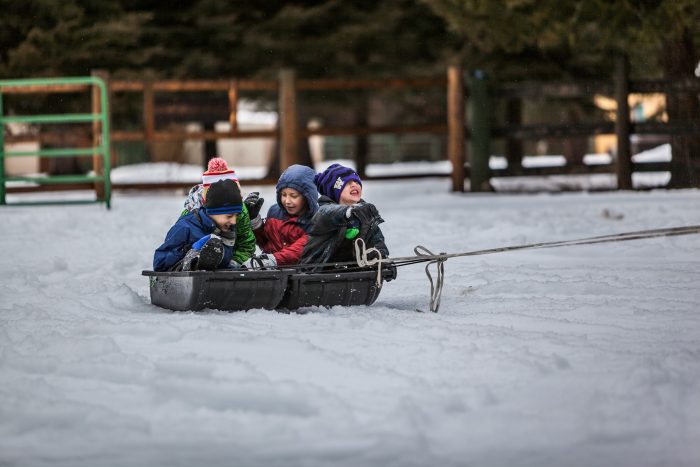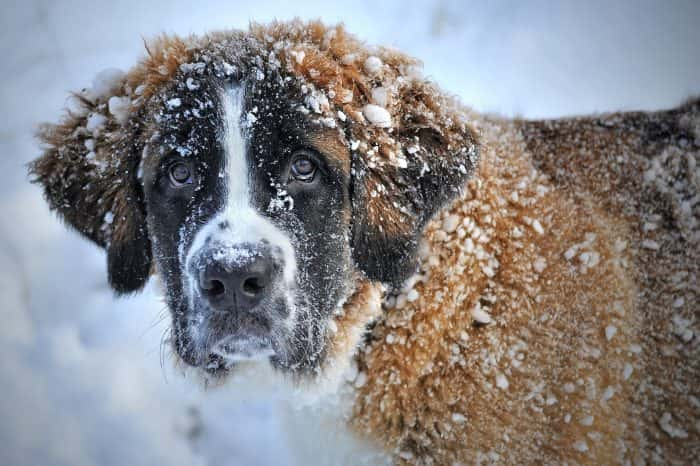Keep the Heat In
1. Wrap up warm. Dress in layers and wear a hat, gloves and scarf. Clothes made from wool, cotton or fleecy fabrics are warmest. When you’re indoors, wear warm socks and slippers to keep your feet cosy.
2. Keep the cold out. Close doors and use a keyhole cover to block draughts. Buy thermal linings for curtains to keep the heat in.
3. Don’t use alcohol to keep warm. Avoid drinking alcohol before going, or when, outside. It makes you feel warm because blood vessels in the skin expand, but this draws heat away from your vital organs.
4. Check your heating. Have your heating system serviced regularly to make sure it works well.
5. Maintain the temperature. Keep your main living room at 18–21°C (64–70°F) and the rest of your house at 16°C (61°F) at least. If you can’t heat all the rooms you use, heat the living room during the day and the bedroom just before you go to sleep. In bed, use either a hot water bottle or an electric blanket.
6. Have warming food and drinks. Have regular hot drinks and food such as porridge, soups and stews.
7. Stay active. Keep as active as possible to boost your circulation. Move around at least once an hour and avoid sitting still for long periods. Even light exercise will help keep you warm. When you do sit down, put your feet up as it’s coldest nearest the ground.
Source: Bhf.org.uk
Protect Your Children in the Cold
With temperatures expected to dip into the single digits this week, it’s a dangerous time for the state’s most vulnerable residents — including young children. To help protect your family’s smallest members.
Layer up! Bitter cold and snow can cause frostbite. Dress children in several layers, and make sure their head, neck and hands are covered. Dress babies and young children in one more layer than an adult would wear.
Play it safe. Even when roads are closed to traffic, it’s not safe to play or sled in the street. Visibility may be limited due to snow banks and ice on the roads makes braking difficult.
Beware of clothing hazards. Scarves and hood strings can strangle smaller children, so use other clothing to keep them warm.
Check in on warmth. Before kids head outside, tell them to come inside if they get wet or if they’re cold. Then keep watching them and checking in. They may want to continue playing outside even if they are wet or cold.
Use sunscreen. Children and adults can still get sunburned in the winter. Sun can reflect off the snow, so apply sunscreen to exposed areas.
Use caution around fires. Wood-burning stoves, fireplaces and outdoor fire-pits are cozy but can present danger, especially to small children. Use caution and put up protective gates when possible. If you’ve lost power or heat and are alternative heating methods like kerosene or electric heaters, be sure smoke detectors and carbon monoxide detectors are working.
Get trained and equipped. Children should wear helmets when snowboarding, skiing, sledding or playing ice hockey. And to avoid injuries, teach children how to do the activity safely.
Prevent nosebleeds. If your child suffers from minor winter nosebleeds, use a cold-air humidifier in their room. Saline nose drops can help keep their nose moist.
Keep them hydrated. In drier winter air, kids lose more water through their breath. Offer plenty of water, and try giving them warm drinks and soup for extra appeal.
Watch for danger signs. Signs of frostbite are pale, gray or blistered skin on the fingers, ears, nose, and toes. If you think your child has frostbite bring the child indoors and put the affected area in warm (not hot) water. Signs of hypothermia are shivering, slurred speech, and unusual clumsiness. If you think your child has hypothermia call 9-1-1 immediately.
Source: CTPost.com
Keep Your Pets Safe
With extremely cold air moving into the area, extra care must be paid toward pets as you would humans.
• Keep cats indoors. Cats are susceptible to freezing in cold temperatures, along with other winter hazards. A cat may also seek shelter under a car hood in the engine compartment, which could cause serious injury or death when the car starts. If your area has a lot of outdoor cats, it may be a good idea to bang on the hood of the car before starting it.
• Keep your pets dry. If they do go outdoors, make sure to dry them off from snow when they come inside. Pay special attention to the paws and legs, to prevent cracking and bleeding and to remove ice-melting salt.
• Don’t groom your pet’s hair too close. Never shave your dog close to the skin in the winter, as the fur provides natural warmth.
• Don’t leave your pet in a car. Leaving a pet in a car that’s not running is very dangerous, and could lead to the animal freezing to death.
• Know your animal. Some dogs are more sensitive to the cold due to breed, pre-existing medical conditions, or breed type. If so, try to limit outdoor time to nothing more than it takes for it to relieve itself.
• Make sure they are well fed and watered. Animals use more energy to stay warm, like humans, during cold weather. Keep their food supply adequate. Water is just as important; make sure it is unfrozen.
• Clean up antifreeze spills. Antifreeze is toxic for pets, like humans. If you spill any in your driveway, make sure to clean it up properly to prevent ingestion.
Adequate protection from the elements: A protected area, in addition to a doghouse or similar structure, that provides shade from the sun and protection from wind, rain, snow and extremes of hot and cold.
Adequate shelter: A dog house or similar structure, for each animal chained, tethered, penned or otherwise restrained or confined outdoors, suitable for the species, age, condition and size of the animal; that has solid sides, floor and top that do not leak air or moisture and a cover over the doorway which keeps the doghouse or structure dry and allows the animal unlimited access and egress from the doghouse or structure; is clean, safe, enables the animal to be clean and dry and protects the animal from injury, rain, sleet, snow, hail, direct sunlight, the adverse effects of heat or cold, physical suffering, and impairment of health; is large enough for the animal to stand up, lie down and stretch comfortably and make all other normal bodily movements in a comfortable, normal position for the animal; has a floor that is elevated from the ground and contains insulation between the floor and ground. A carrier or crate is not adequate shelter.
Source: KCRG.com
Until next time! Stay warm!







